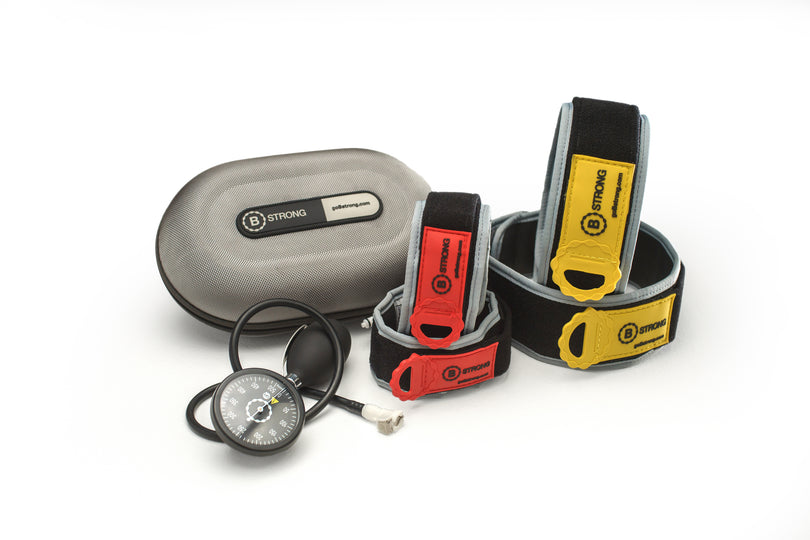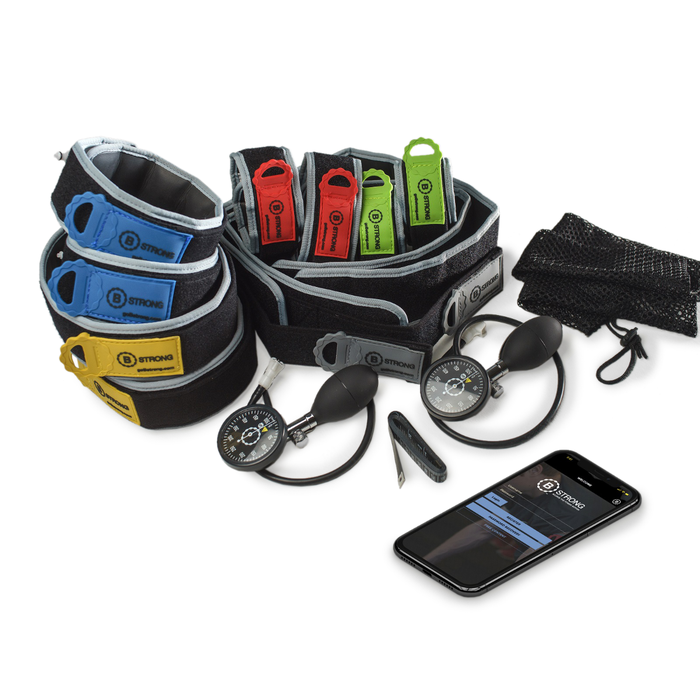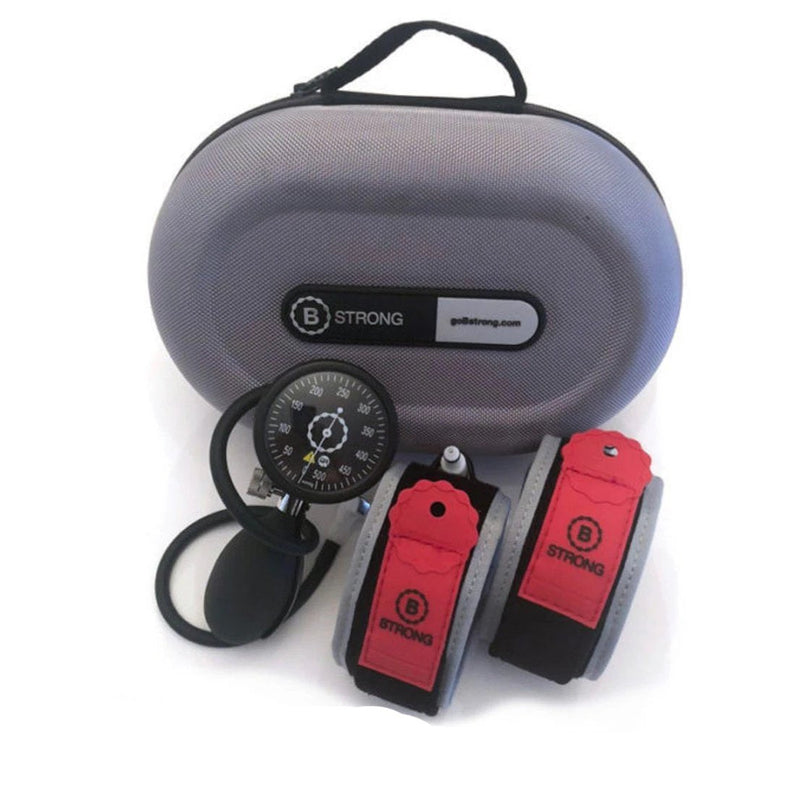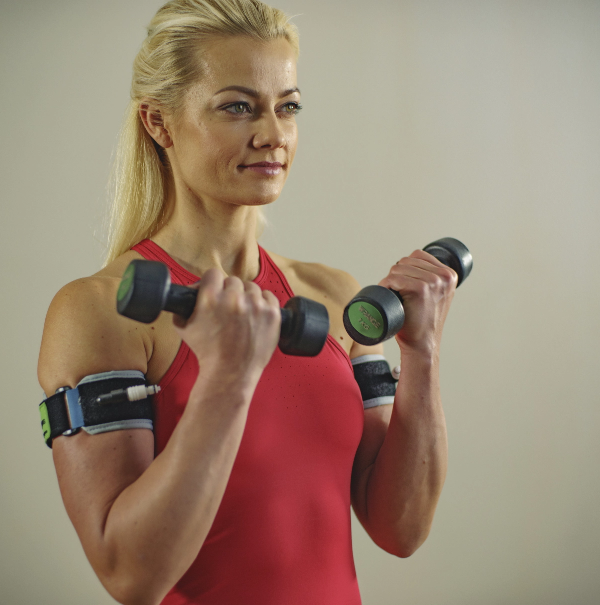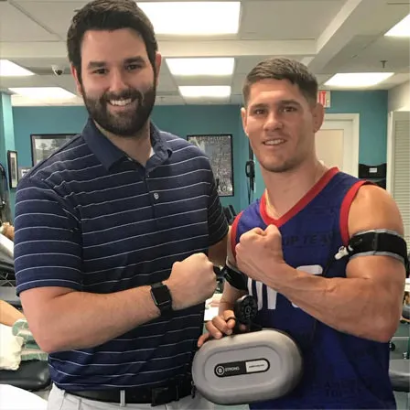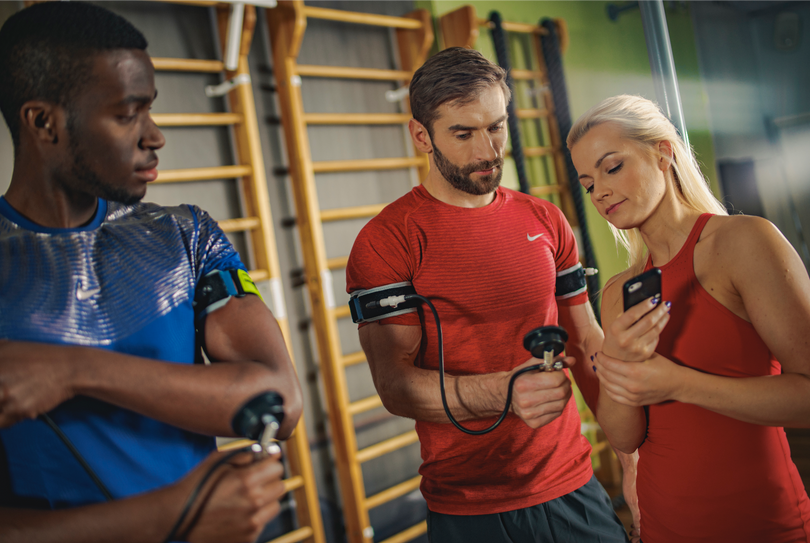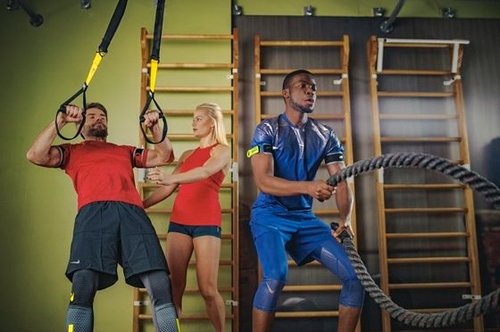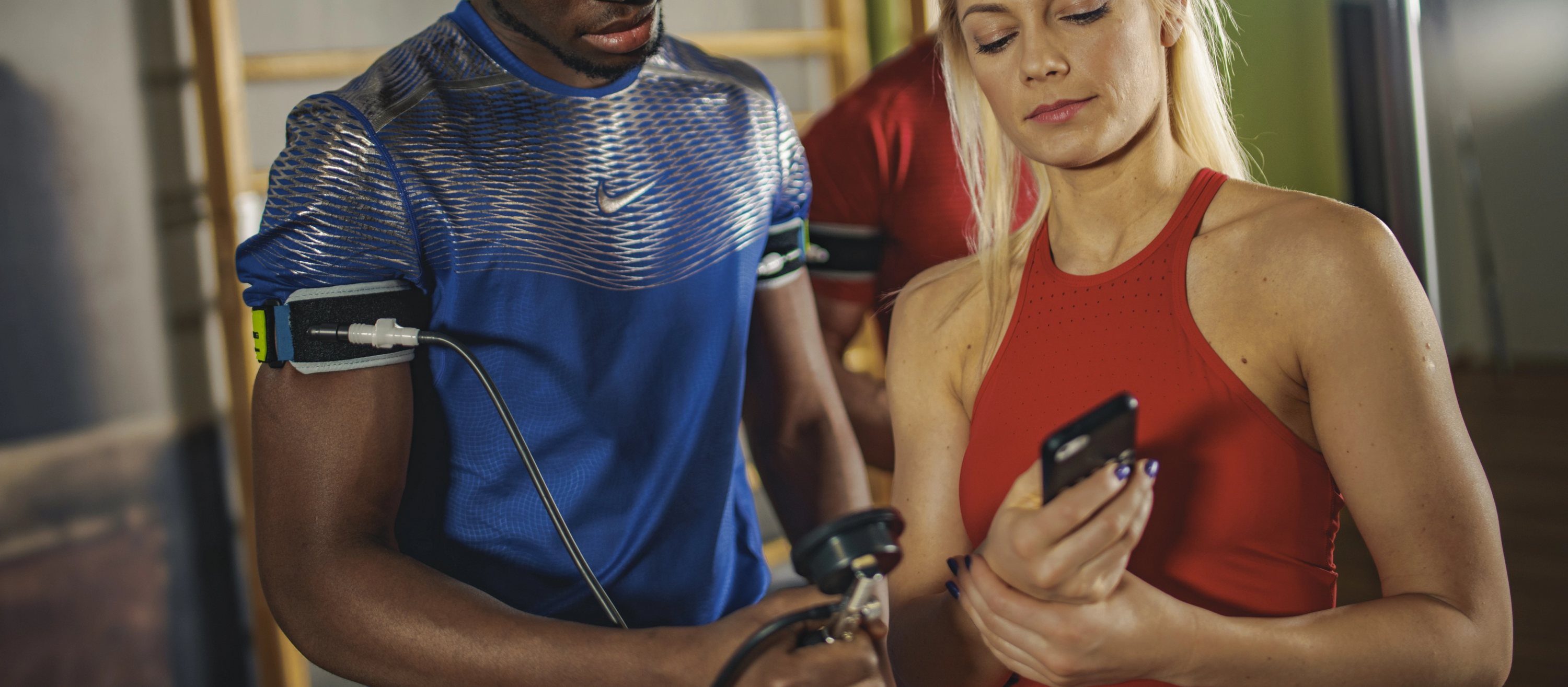As a physical therapist, I’ve seen dozens of patients who report following being immobilized in a boot or cast eager to begin moving again. Usually they say something along of the lines of
"Now that I’m out of my cast, the doctor says I’m ready to start physical therapy."
The patient then jumps up on the table, exposes their limb, and shakes their head in disbelief as they see how much their limb has shrunk.
Several studies (1,2,3) have demonstrated the impact of repetitive blood flow restriction without exercise on muscle size and strength following immobilization. Two (1,2) looked at immobilization of the lower extremity in a cast and the third (3) was implemented in post operative ACL reconstruction cases. All studies showed improvement in strength between the BFR group and control group and the two studies that implemented greater pressure with the BFR bands noted reduced atrophy as well. In the ACL reconstruction cases, you can see below how the cross-sectional area of the thigh was measured with MRI and the BFR group noted significantly less loss in girth.

By taking these concepts a step further and implementing exercise in conjunction with the blood flow restriction the results can be more impressive. Clinically speaking, I’ve seen maintenance of and even increase in cross-sectional area of immobilized limbs with blood flow restriction training. By maintaining or increasing muscle girth while the limb is still immobilized, the therapist can build foundational strength much earlier in the rehabilitation process. In a way, there is less to recover from a muscle mass and strength perspective. It gives the patient a head start in the “marathon” they are about to begin with the rehabilitation process following injury or surgery.
So what does this look like? See below for a couple example exercises that can be utilized with patients who are currently non weight bearing with a foot or ankle injury.
Core Assisted Single Leg Lowering
This exercise emphasizes stabilizing the trunk, hip separation, posterior chain mobility, and starting to re-establish proper movement patterns while while the patient is still immobilized. With the B Strong bands on, a burn into the arms and legs will increase the intensity of the exercise while still protecting the healing tissues.
Tall Kneeling Hip Hinge + Upper Extremity Row
This exercise will help in regaining glute strength while actively working into hip extension. While walking around on crutches for an extended period of time the hip flexors of the affected leg become short and tight. This will help the patient reverse that posture at the lower extremities and by adding in the row for the upper extremity it helps reverse posture being hunched over the crutches week after week. A foam roll can be placed under the ankles to fully offload or exercise can also be performed with feet off the edge of table.
Source:
References:
- Kubota A, Sakuraba K, Koh S, Ogura Y, Tamura Y. Blood flow restriction by low compressive force prevents disuse muscular weakness. J Sci Med Sport. 2011; 14: 95-99.
- Kubota A, Sakuraba K, Sawaki K, Sumide T, Tamura Y. Prevention of disuse muscular weakness by restriction of blood flow. Med Sci Sports Exerc. 2008; 40: 529-534.
- Takarada Y, Takazawa H, Ishii N. Applications of vascular occulusion diminish disuse atrophy of knee extensor muscles. Med Sci Sports Exerc. 2000; 32: 2035-2039.

